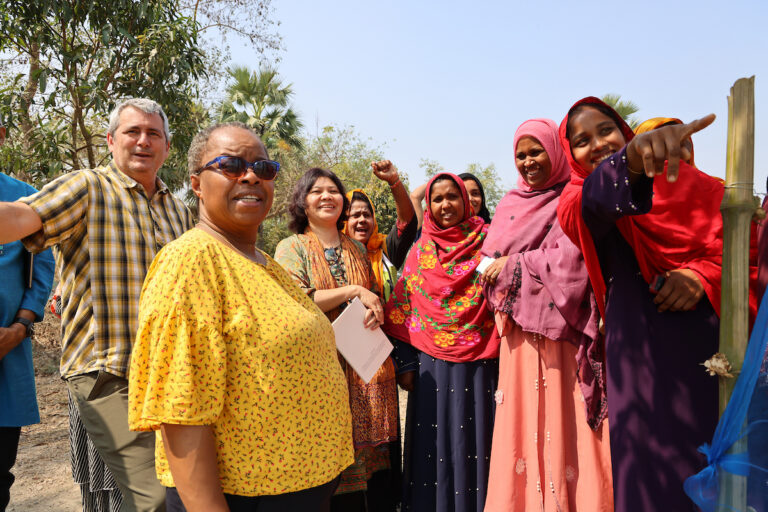Waymaking Our Future State
2024 Impact Report
Waymaking our future state
2024 Impact Report
As Food for the Hungry reflects on our journey in 2024, we are pleased to present our third annual Mission Impact Report.
One of our critical accomplishments this year was solidifying our definition of what Mission Impact means for Food for the Hungry. Ultimately, what we intend to measure is our contribution to ensuring that “those we serve have agency and the necessary resources to be resilient and flourish.” In pursuit of our ability to effectively measure and transparently report our contributions and results, we designed a new Mission Impact Index, which includes four elements of measurement: agency, resources, resilience, and flourishing.
Since 1971, we’ve worked along people challenged by poverty, injustice, and marginalization in difficult and complex environments. Overall, our programs positively impacted the lives of 9,925,644 people in 3,715 communities across 17 countries in 2024.
In 2022, Food for the Hungry launched a new program model to guide how we design our work, titled “Resilience and Flourishing through Systems Transformation (RFST).” Through this new program model and approach, we seek to catalyze and unlock value for both our shareholders – the individuals and communities we serve – and investors – those who invest resources or expertise to advance a shared mission.
OPERATIONALIZATION THROUGH TECHNICAL ASSETS
We build resilience that enables children, families and communities to flourish
Our Program Model does not consider resilience as a stand-alone technical specialization. Collectively the three resilient capacities and flourishing elements builds resilience that enables children, families and communities to flourish.
Our organizational intent is to help build resilience that enables children, families, and communities to flourish. To do that, our new program model takes a systems-based approach to unlock and catalyze the potential already resident in communities to be resilient and flourish. Rather than looking at single causes, we seek to build three capacities of resilience: absorptive, adaptive, and transformative that address root causes. To complement that approach to resilience, our program model also concentrates on strengthening three pathways to achieve flourishing: mental and physical wellbeing, productive learning, and asset creation.
Building resilience as our developmental approach in tandem with the three above-mentioned pathways for flourishing is Food for the Hungry’s strategic approach for contributing value and delivering impact. Our program model – “Resilience and Flourishing Through Systems Transformation” – applies principles of behavioral economics to addresses the root causes of poverty, injustice, and marginalization in order to build, transform, or mold systems that are required in order to achieve the desired impact for mental and physical wellbeing, productive learning, and asset creation.
In addition, our design methodology incorporates four critical elements in all our programming: human-centered design (HCD), social return on investment (SROI), systems practice, and Biblical worldview.
Because we recognize that our reimagined Mission Impact work is still in progress, we currently rely on our existing programming to achieve progress toward this new program model framework.

OUR 2024 IMPACT
PATHWAYS TO FLOURISHING
Maternal, Child, Adolescent Health and Nutrition
Stunting decreased among 58,242 children 0-23 months as a result of improved health and nutrition behaviors among 538,036 women of reproductive age.
Early Childhood Development and Formal and Informal Education until Adolescence
6,616 children met their early learning and development milestones enabling them to enroll in school by age 6.
26,512 children attained the literacy and numeracy standards for completion of grade 3 as a result of 119,728 parents, caregivers, and teachers acquiring skills in child pedagogy.
Entrepreneurship and Business Development
Assets exceeding $14 million were created through saving, loans, and entrepreneur efforts. As a result, 557,118 households reported consuming four or more diversified food groups.
Agriculture Value Chain
No data yet to report
DEVELOPMENTAL APPROACH
28,764 community leaders implemented disaster risk reduction (DRR) plans that reduced socio-economic vulnerabilities and managed environmental and other hazards that trigger them.
70,320 community and church leaders led their communities’ transformational journey.
